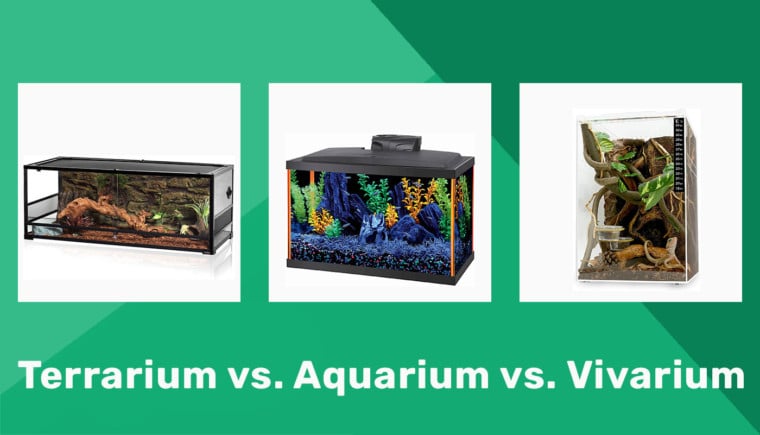
Terrarium and aquariums are types of vivariums or vivaria, if you prefer. Each of these terms describes a specific environment in which one creates using an enclosed container. You can fill them with a variety of decor, both natural or artificial. The differences between the various ones depend on the native habitat of its occupants. That applies to what’s inside of each one and also the kind of enclosure you can use.
However, it also goes beyond what you put inside of it. Hobbyists usually recreate the environmental and climatic conditions, such as humidity, water availability, land, and temperature. You are essentially establishing a microclimate for the organisms that live inside of it. One key element of any type of vivarium is stability. That means keeping the conditions within the parameter of which the plants and animals are adapted.
The Challenge of Maintaining a Terrarium, Aquarium or Vivarium
Many species vary in their ability to tolerate change. Therein lies the challenge of maintaining a terrarium, aquarium, or another type of vivarium. You must also take into account the natural cycles that occur in the various environments, such as the nitrogen cycle in aquariums. On the positive side, the pressure of predators doesn’t exist, which can give the animals and plants a competitive edge that they wouldn’t have in the wild.
Overview of Terrarium
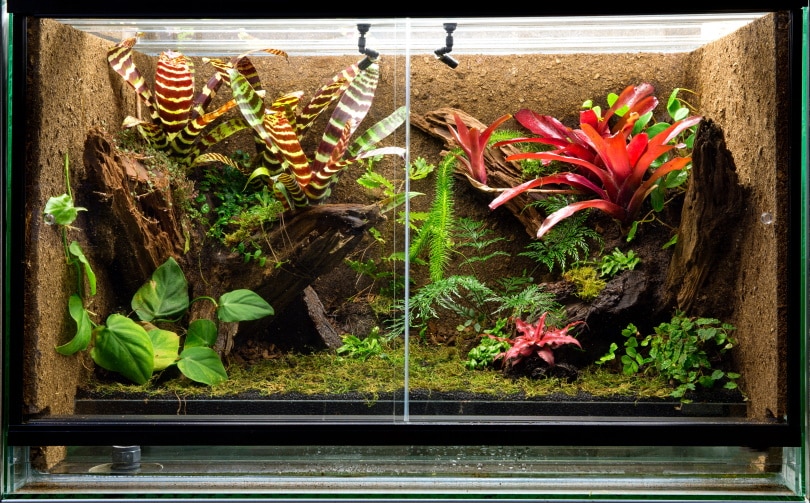
A terrarium offers a way to house terrestrial organisms and plants that replicate the natural environment of some kind of habitat where you’d usually find these species. It involves the typical elements of survival, including sufficient food, water, and cover. The setup of these tanks may seem more familiar to you than aquariums. After all, you’re a terrestrial creature. You can relate to a wooded or wetland environment.
You’ll find a range of habitats, from desert to shoreline to tropical. A general rule of thumb is that the more different it is from where you live, the more maintenance you’ll have to do. If you live in the temperate Midwest, you’ll have to provide a heat source for animals and plants that prefer it on the warmer side. Likewise, subtropical and tropical species need sufficient humidity.
We suggest learning what are the most critical elements for the species you intend to put in your terrarium. Learn about their care and their tolerance for conditions that are less than ideal. Let’s face it. There is a learning curve when you first get started in this hobby. That’s why it’s always a smart plan to begin with species that can handle the bumps along the road.
How It Works
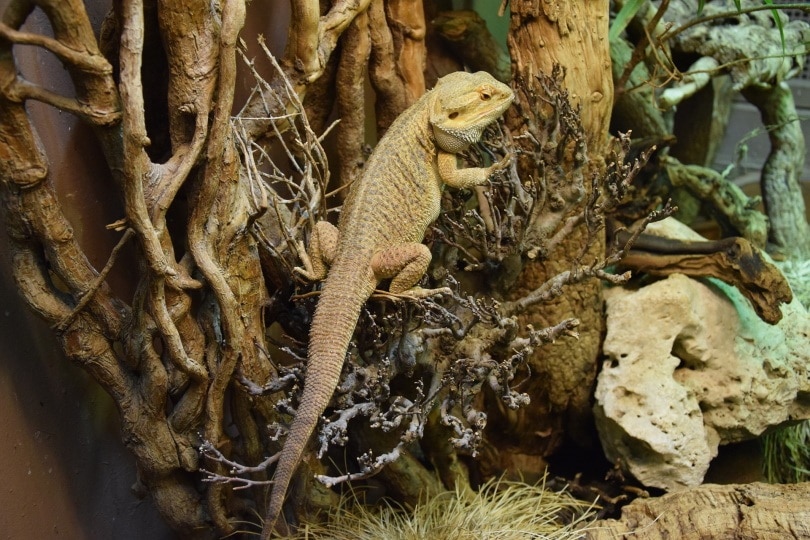
There are two things at work when setting up a terrarium. You’re creating a unique habitat with all the elements of the land and climate. You’re also fulfilling the needs of the animals and plants that will live in it. You may find that it’s easier, to begin with the former before you populate it with pets. That way, you can tweak the vital elements and learn how everything interacts before putting it to the test.
When to Use It
A terrarium is best used with terrestrial organisms, hence, the name. Often, it’s a semi-dry or arid environment. Once you add humidity to the mix, then you risk mold and bacterial diseases. Some animals like occasional misting, which can satisfy the need for moisture. However, it is a delicate balance that will require some monitoring to get right.

Overview of Aquarium
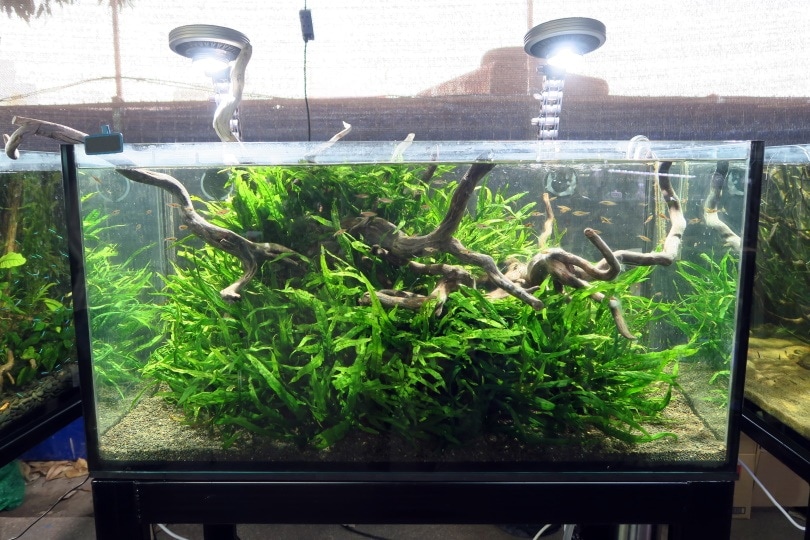
Your first venture into owning fish was probably a goldfish or betta that you bought from a pet store or won at a carnival. You may have kept it in a bowl, thinking that it was perfectly happy in this glass globe. Things have changed on several scores. Advances in technology have made it easier to maintain a healthy environment for your aquatic friends, keeping conditions more stable.
Aquariums can range anywhere from 5 to hundreds or even thousands of gallons. The thing to remember is that the smaller the volume, the more volatile the conditions are. The water quality can go from excellent to dangerous literally overnight. Therefore, its chemistry is part of the mix and maintenance that you don’t have with a terrarium.
Related: 10 Best Saltwater Aquarium Filters 2021 – Reviews & Top Picks
How It Works

An aquarium is a mini pond or ocean. It requires planning on several fronts, from where you’re going to put it to what fish to add. Unless you get a large terrarium, the aquarium is a semi-permanent feature. Draining and moving a tank is labor-intensive and harmful to its inhabitants. It involves a break-in period to jumpstart the nitrogen cycle to keep conditions safe for everyone.
Once established, your primary maintenance is regular water changes. That will remove higher concentrations of ammonia, nitrites, and nitrates, which are toxic to the inhabitants of the tank. Your initial investment is typically higher than a terrarium, too. The aquarium is one thing. You’ll also need a filter, heater, and other accessories in addition to the substrate and decor you’d put in either a tank or terrarium.
When to Choose It
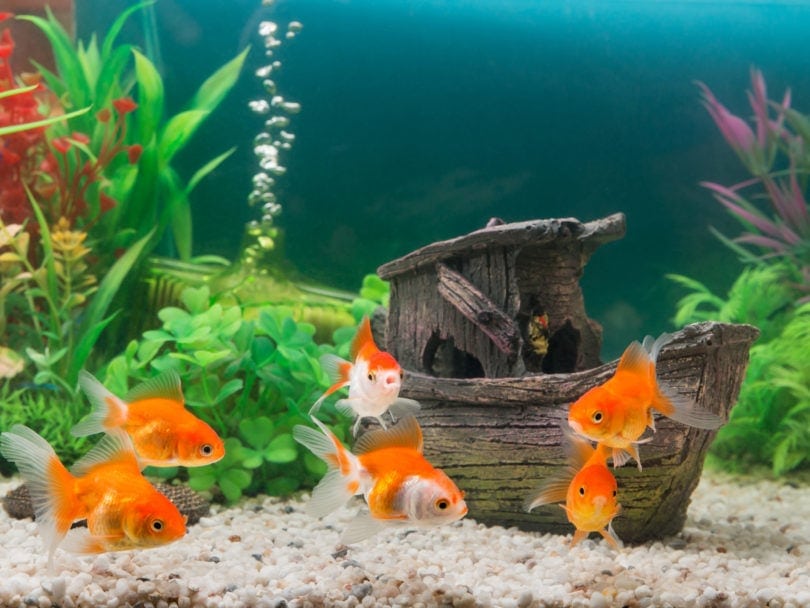
An aquarium is your only choice when raising fish. It doesn’t matter if they are goldfish, freshwater, or saltwater species. You can opt to add live or artificial plants. You aren’t as limited to other things to put in the tank as you would with a terrarium. If you want to add that skeleton and the treasure chest bubbler, go right ahead and make it a desert island.
Since it’s an enclosed environment, you must research the optimal conditions for what you’ll put in the tank. Remember that an aquarium needs a light source that you’ll have to run for at least 12 hours a day. That, along with the sounds of the pumps and filters, may limit where you can place it. Also, think about the weight. Water weighs 8 pounds per gallon, to say nothing of the substrate, tank, and anything else you add.
Overview of Vivarium
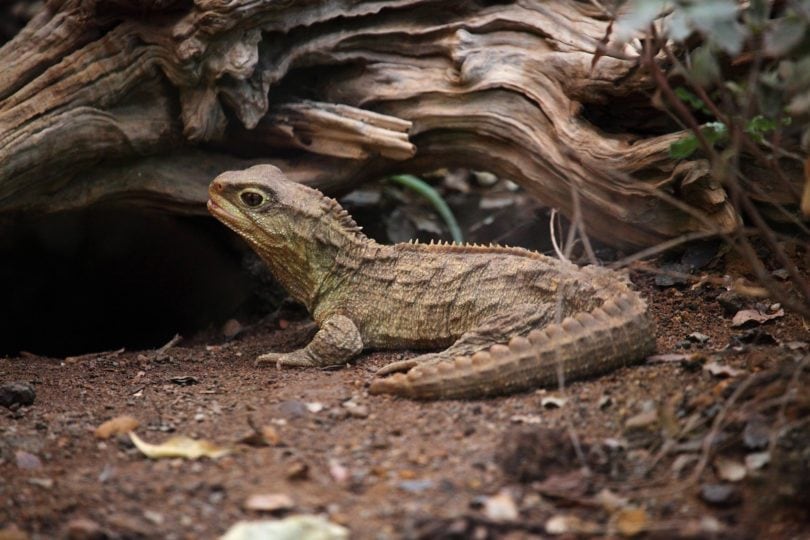
Terrarium and aquariums are different types of vivariums, making the term an apt description for either one. The other consideration is the other kinds that exist. For example, if your vivarium includes animals and plants that normally live along riverbanks or shorelines, then it is a riparium. If you’re recreating a wetland habitat, then you have a paludarium.
The prefix reflects that kind of environment. Thus, terra, meaning earth, lends its name to terrariums. Likewise, an aquatic habitat populated with fishes and live plants is an aquarium. The best thing about them is that it gives you and your children an opportunity to observe Nature up close. You can see how different organisms make a living and their social organization, such as a formicarium or ant farm.
How It Works

How a vivarium works depends on the environment in which you want to create. We refer you back to the above sections for details. Terrestrial setups run the gamut of the habitats you want to replicate. With an aquarium, you can choose between freshwater, brackish, or saltwater. You’ll have to monitor water conditions no matter which one you get.
We suggest reviewing the conditions before picking one over the other. Some vivariums require a delicate balance between optimal and not-so-great. Find out what you must do on a daily, weekly, and monthly basis to ensure a healthy environment. Setting up a vivarium is a serious responsibility, even if you’re going to put in animals with which you’ll have no physical interaction.
When to Choose It
When you specialize in a particular setup, you’re upping your costs for the initial investment and maintenance. That’s what makes doing your homework so valuable. You may find that some animal species are more difficult to obtain than others. It’s often a reflection of their tolerance and availability. We suggest researching prices before you start. Some animals may fetch a higher price tag than you may think.

Other Factors to Consider
Setting up the enclosure is your primary investment. With proper maintenance, your day-to-day costs will likely be minimal—unless you upgrade. We suggest keeping that possibility in mind regarding what can make the transition into something larger or different. You’ll find it helpful to do some price checking before deciding which option is best for you.
Shape
Terrariums often have a decorative element about them, which lends themselves to various shapes. That’s usually a selling point, especially when adding one to an office or as part of the decor. On the other hand, aquariums are typically rectangular. That shape maximizes the surface areas for oxygen exchange to occur. A bowl or square tank won’t be as effective.
The concentration of dissolved oxygen is one factor that determines the livability and, thus, survival of the plants and animals that live inside of it. Agitating the surface brings more of this vital element into the water. That’s why you’ll see products such as airstones that will allow it to occur. That brings to the table the most significant difference between terrariums and aquariums, gas exchange.
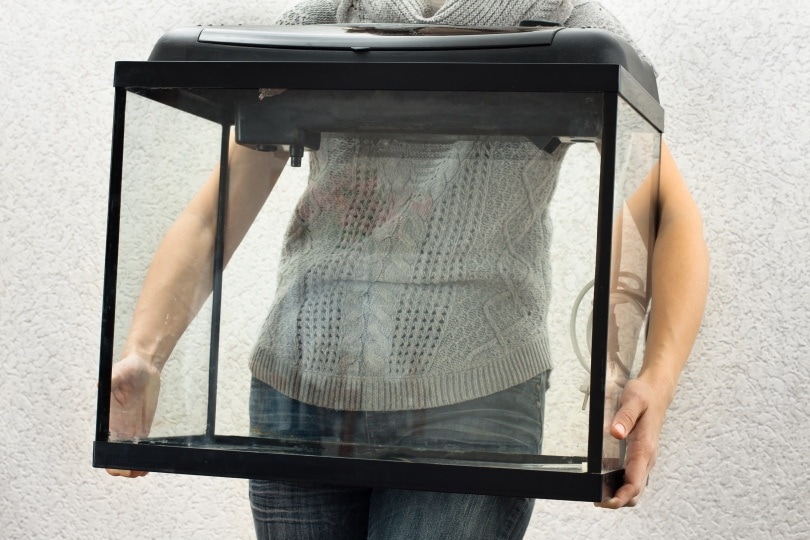
Size
Size matters to all three types of enclosures, especially when juxtaposed against the inhabitants of each one. There usually isn’t a hard-and-fast rule because so many other factors go into the equation. You must consider the full-grown size of the plants and animals, their activity levels, and lifestyle. Solitary animals may need a lot less space than ones that live in groups or schools.
We also have to address the elephant in the room. The size of the vivarium plays a key role in how often you have to clean it. It also relates back to the species and assemblage of inhabitants. For example, some aquariums incorporate live plants into the living space to provide food for them, and a means to keep waste under control.
The takeaway message is to research the needs of any organism you want in your vivarium. That will help you choose the right one to create a healthy environment for all the inhabitants. Make sure to learn about their diet, behavior, and any other special needs to guide your decisions.
Types of Enclosures

There is some overlap between terrariums, aquariums, and vivariums. However, there are also stark differences that you need to keep in mind when shopping. Your research will help, which is one reason we emphasized it. Water is the key element that differentiates a lot of these enclosures. That involves its availability, the humidity it creates, and the pressure it’ll put on the vivarium.
Materials
It’s essential to get an enclosure that is made for the setup you want. An aquarium brings water pressure to the mix, which means you must get something that can handle it. You can use any tank for a terrarium or other vivarium, depending on the water availability. If you’re going to add it to the setup, opt for a fish aquarium to play it safe.
| When to Use a Terrarium | When to Use an Aquarium | When to Use a Vivarium |
| Low humidity | n/a | Depends |
| Little to no water availability | Aquatic environment | Varies |
| Terrestrial inhabitants | Aquatic inhabitants | Terrestrial and semi-terrestrial inhabitants |
| Live and artificial plants | Live and artificial plants | Live and artificial plants |
Conclusion
A vivarium is an excellent teaching tool, even if you aren’t cuddling with your lizard or fish. It gives you and your kids a bird’s eye view of what life is like on the wild side. It offers ways to learn about biology, ecology, and chemistry from the comfort of your home. It’s also a way to teach your children about personal responsibility. That makes it an invaluable tool, whether you’re filling it with fishes or lizards.
Featured Image Credit: susemeyer0815, Pixabay






